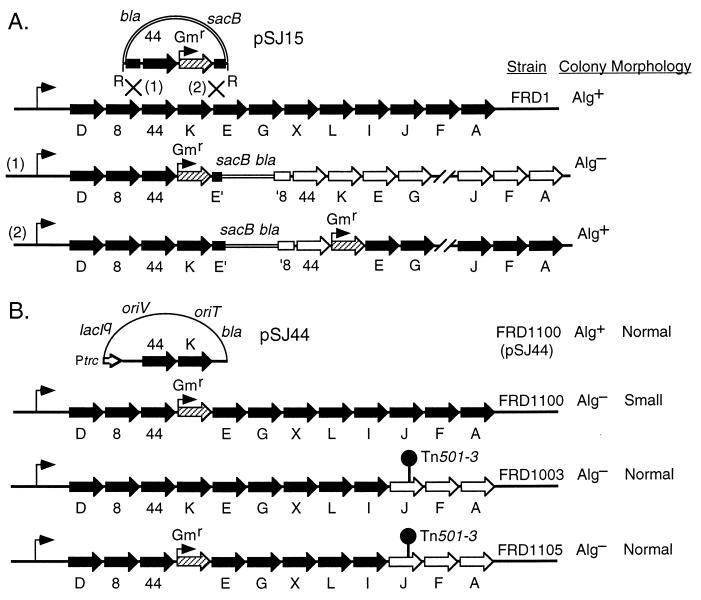FIG. 4.
Construction of algKΔ mutants of P. aeruginosa. (A) Plasmid pSJ15 contains a 3.8-kb EcoRI (R) fragment of the algD operon in FRD1 cloned into a gene replacement vector (pEX100T), with a nonpolar Gmr cartridge (hatched arrow) replacing algK. Shown are the predicted genotypes of merodiploids that formed when pSJ15 integrated into the chromosome of mucoid FRD1 to form mucoid (Alg+) and nonmucoid (Alg−) colonies. When a crossover occurs at site 1, the integrated vector has a polar effect on the transcription of downstream genes (open arrows), and the strain should be Alg−. When a crossover occurs at site 2, the promoter of the Gmr gene should drive transcription of downstream genes in the algD operon so that all genes in the operon are expressed (black arrows), and this strain should be Alg+. (B) Diagrams of pSJ44, which expresses algK in trans, and the algD operons in the mutants used in this study along with their colony morphologies are shown. Note that in a strain overproducing alginate (FRD1), a nonpolar algKΔ::Gmr mutation resulted in a small-colony (i.e., sick) phenotype (strain FRD1100) and that this phenotype could be suppressed (strain FRD1105) with an algJ::Tn501-3 mutation (shown as a pin) which was polar on algA. Open arrows indicate genes that are not expressed. The genes of the algD operon are not drawn to scale.

